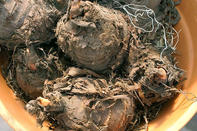Although neglected and underutilised in South Africa, indigenous vegetables can diversify farming systems, ensure food security and help to alleviate poverty, whilst increasing income and improving human health.
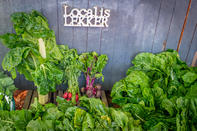
Indigenous vegetables are tolerant of harsh environmental conditions, having already adapted to local Southern African conditions (as most grow wild) and are therefore suited to non-irrigated production. In addition, these crops are also part of the region’s cultural heritage.
‘African leafy vegetables’ refers to the group of plant species used as leafy vegetables and is also called morogo or imifino by locals in Southern Africa. African leafy vegetables form part of the daily staple diet of millions of (often rural) South Africans and are rich in nutrients such as vitamin A and iron.
The young, succulent stems, flowers and very young fruit, are used as vegetables. Dishes may be prepared from a single vegetable or from a combination of different species.
To add flavour, ingredients such as tomatoes, onions, peanut flour and spices may be used. Most of these crops are wild harvested, while a few are cultivated, mostly to sustain rural families.
Currently, the Agricultural Research Council (ARC) is making an effort to promote the growing and using of these vegetables by farmers, women and vulnerable groups.
Research projects by the ARC focus on the development of better cultivation practices, improved planting and harvesting methods, determining the optimal water and fertilizer requirements, new product development and soil-water-balance modelling.
This information will be utilized to generate farming guidelines for the production of African leafy vegetables.
The research program studied the following crops: Amaranth Spider plant (Cleome gynandra) Corchorus spp Nightshade (Solanum retroflexum) Pumpkins and bitter melon Cowpea (Vigna unguiculata) Amadumbe (Colocasia esculenta) Amaranth, corchorus and spider plant are traditional leafy vegetable crops with high nutritional value with high levels of calcium, iron and vitamins A and C.
Amaranth and corchorus are also rich in protein and fibre. Although these crops can be considered as low management crops and can grow in poor soils, research results show that yield can be increased by adding fertilizer or enriching the soil with compost.
Amaranth
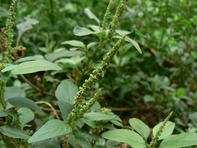
An extremely variable herbaceous plant growing from 30 cm to 2 m high. The young leaves, growth points and whole seedlings are used as a vegetable. Seeds are cooked like a grain, ground to a flour and dried.
Leaves and stems are ground and used as snuff. Of all the ‘weeds’ that are also considered leafy vegetables in South Africa, amaranth has the greatest potential as a commercial crop.
Spider Plant
A herbaceous plant with hairy leaves and stems, spider plant’s leaves are compound - like fingers on a hand - and used when young. Sometimes bitter, it is can be cooked in milk with tomatoes and served like spinach, adding a sharp taste to the dish.Corchorus Species
Commonly known as Jew’s Mallow (Corchorus olitorius and Corchorus tridens) this plant is an annual herb with tiny yellow flowers. Cooked corchorus has a slimy texture, similar to okra. To reduce the sliminess bicarbonate of soda (or even cow urine) are added to the cooking water.Nightshade
Nightshade is a herbaceous plant growing up 75 cm high and is also known for its small, shiny, purple-black fruit, which can be eaten fresh but is often used in jams. The green fruit is poisonous. Leaves and young shoots are cooked but leaves can also be eaten raw.Pumpkins and Bitter Melon
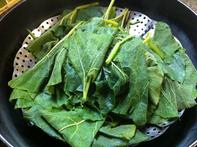
Cowpeas
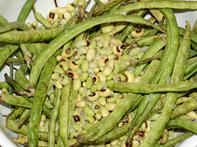
Amadumbe
